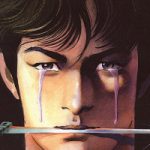Seinen manga
Regions: Japan

Seinen manga is a type of Japanese comics aimed at young adult and adult male readers. Similarly as with shōnen manga, it primarily focuses on action, fantasy, sc-fi, horror and sport, although it often deals with historical drama, politics, romance and slice-of-life genre as well. It is most often published in serialized form in widely circulated weekly or monthly magazines (so called “manga zasshi”) such as Big Comics, Young Jump, Manga Action, Morning or Young Magazine. While seinen manga often includes erotic scenes, it should not be confused with openly pornographic manga, which is usually called seijin manga (adult comics) or ecchi manga, and which is serialized in such magazines as Comic Sigma or Comic LO.
The origins of seinen manga can be traced to 1950s, when the so-called gekiga style became very popular among young comics authors and readers, who demanded more sophisticated and adult reading than contemporary manga, which was still largely simplistic and aimed mainly at children and young teenagers. Gekiga authors such as Yoshihiro Tatsumi (1935-2015), Takao Saitó (*1936) or Sanpei Shirato (*1932) embarked on drawing manga in a more realistic style than many of their contemporaries; they focused on both slice-of-life and historical drama, while not shying away from such adult themes as sex, depression, violence, poverty and death. Especially Shirato’s historical drama Legend of Kamui (Kamui den, 1964-1971) serialized in an avant-garde magazine Garo reached great popularity with university students and young blue-collar workers, who soon became a powerful manga readership. In 1960s new magazines – for example Manga Action (1967) or Big Comics (1968) – appeared to satisfy their demand for young adult-oriented comics, and even some originally shōnen manga magazines – namely Shōnen magazine – sacrificed some space to comics belonging into seinen category. Among popular authors who contributed to these magazines belonged Takao Saitó with his famous long-running series Golgo 13 (1968-ongoing), Tetsuya Chiba (*1939) with his wrestling manga Notari Matsutarō (1973-1998) or Leiji Matsumoto (*1938) who serialized his legendary sci-fi Galaxy Express 999 (Ginga tetsudó 999, 1977-1987) in Big Comics. Among contributors was also Osamu Tezuka (1929-1989) who fantastical stories such as Ode to Kirihito (Kirihito sanka, 1966-1967) and MW (1976-1978), or historical drama Sunlit Tree (Hidamari no ki, 1981-1986) represented his maturing as a comics author. While the authors of seinen manga were largely male, several notable female authors appeared in 1970s, namely Rumiko Takahashi (*1957) whose rabukome (love comedy) series Maison Ikkoku (1980-1987) or One Pound Gospel (Ichi-pondo fukuin, 1987-2007) became very popular with readers. In 1980s seinen manga magazines started publishing also the so-called “jōhō manga” (information comics) which merged an entertaining storyline with factual information and explanation of various topics. Prime example of such comics was Japan Inc.: An Introduction to Japanese Economics (Manga Nihon keizai nyūmon, 1986) by Shōtarō Ishinomori (1938-1998), which explained the basics of Japanese economy and company management on a story about a fictitious Matsutomo company. Another popular seinen genre (sometimes considered a sub-genre to information manga) is “gurume manga” such as The Gourmet (Oishinbō, 1983-ongoing) by Tetsu Kariya (*1941) and Akira Hanasaki (*1956), which introduces the readers to various food and cooking techniques.
— Anna Krivankova
See Also: Chiba Tetsuya, josei manga, Ranma ½, shōnen manga, Tezuka Osamu
Further Reading
- Allison, Anne. Permitted and Prohibited Desires Mothers, Comics, and Censorship in Japan. Berkeley, Calif.: University of California Press, 2000.
- Gravett, Paul. Manga: Sixty Years of Japanese Comics. London: Laurence King, 2004.
- Kinsella, Sharon. Adult Manga: Culture and Power in Contemporary Japanese Society. Honolulu: University of Hawai’i Press, 2000.
- Schodt, Frederik L. Dreamland Japan: Writings on Modern Manga. Berkeley, Calif.: Stone Bridge Press, 1996.


